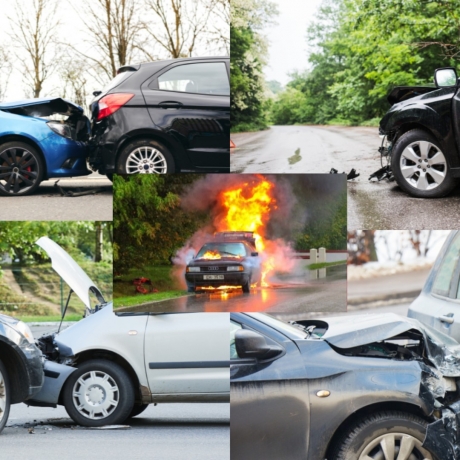Car accidents are a reality of modern life, occurring every day on the roads and highways across the United States. While some result in minor damage, others can cause serious injuries and significant financial losses.
Understanding the types of car accidents can help drivers be more cautious and aware on the road.
From busy urban intersections to quiet suburban streets, crashes happen for many reasons, including distracted driving, speeding, and adverse weather conditions. Each type of accident presents unique challenges and consequences, making it important for drivers to stay informed and prepared.
When a car accident happens, navigating insurance claims and understanding liability can be overwhelming. To ensure the best outcome and protect your rights, seeking guidance from the best car accident attorneys is often a wise decision.
Below, we explore some of the most common types of car accidents and what makes each one unique.
Rear-End Collisions
Rear-end accidents are among the most common types of car accidents. They occur when one vehicle hits the back of another, often due to sudden stops or following too closely.
Common causes include:
- Distracted driving
- Tailgating
- Slippery roads due to rain or ice
These collisions can lead to whiplash injuries and damage to both vehicles. To reduce the risk, drivers should maintain a safe following distance and remain attentive to traffic conditions.
Side-Impact (T-Bone) Collisions
T-bone accidents happen when the front of one vehicle strikes the side of another, forming a "T" shape at impact. These crashes often occur at intersections where one driver fails to yield or runs a red light.
Possible consequences include:
- Serious injuries to passengers on the impacted side
- Significant damage to the vehicle frame
Defensive driving and cautious behavior at intersections can help prevent side-impact collisions.
Head-On Collisions
Head-on crashes are among the most dangerous types of accidents, often resulting in severe injuries or fatalities. These occur when two vehicles traveling in opposite directions collide directly.
Common causes include:
- Driving the wrong way on a road
- Falling asleep at the wheel
- Impaired driving
To avoid head-on collisions, drivers should remain alert and avoid distractions, especially on two-lane roads.
Multi-Vehicle Pileups
Pileups typically occur on highways or busy roads when multiple vehicles collide in a chain reaction. These accidents can be chaotic and challenging to navigate.
Factors contributing to pileups include:
- Fog or poor visibility
- Slippery road conditions
- Sudden braking in high-traffic areas
Drivers can minimize risks by maintaining a safe distance and reducing speed during adverse weather conditions.
Sideswipe Accidents
Sideswipes happen when two vehicles traveling parallel to each other make contact. These accidents usually occur during lane changes or merges.
Common causes include:
- Failure to check blind spots
- Distracted driving
- Aggressive lane changes
Proper use of mirrors and turn signals can help reduce the likelihood of a sideswipe accident.
Rollover Accidents
Rollovers happen when a vehicle flips over onto its side or roof. SUVs and trucks are more prone to these accidents due to their higher center of gravity.
Potential causes include:
- Taking sharp turns too quickly
- Overcorrection of steering
- Collisions with other vehicles
To prevent rollovers, drivers should avoid sharp maneuvers and drive cautiously, especially in larger vehicles.
Final Thoughts
Car accidents can happen in many forms, each with its own set of risks and consequences. By understanding these types mentioned in this article, drivers can be better prepared to avoid dangerous situations and protect themselves on the road.
However, when an accident does occur, having professional legal support can make a significant difference. The top car accident attorneys can help navigate complex claims, negotiate with insurance companies, and ensure that victims receive the compensation they deserve.
Staying informed and proactive is key to safer driving and a smoother recovery in the event of an accident.






